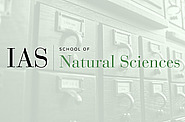Joint IAS Princeton University Astrophysics Colloquium
Mar
06
2018
Institute for Advanced Study/Princeton University Joint Astrophysics Colloquium
The Dynamics of the Local Group: Challenges to Convention in the Era of Precision Astrometry
Gurtina Besla
11:00am|Princeton University, Peyton Hall Auditorium
Feb
27
2018
Institute for Advanced Study/Princeton University Joint Astrophysics Colloquium
Simulating Galaxy Formation: Illustris, IllustrisTNG and beyond
Mark Vogelsberger
11:00am|Princeton University, Peyton Hall Auditorium
Feb
20
2018
Institute for Advanced Study/Princeton University Joint Astrophysics Colloquium
Energization of the Solar Wind and Relativistic Jets by Alfven-Wave Turbulence
Ben Chandran
11:00am|Princeton University, Peyton Hall Auditorium, Room 145
Feb
13
2018
Institute for Advanced Study/Princeton University Joint Astrophysics Colloquium
The New Horizons Exploration of Pluto
Tod Lauer
11:00am|Princeton University, Peyton Hall Auditorium, Room 145
Feb
06
2018
Institute for Advanced Study/Princeton University Joint Astrophysics Colloquium
Black Hole Feedback and Chemical Enrichment in Clusters, Groups and Giant Elliptical Galaxies
Norbert Werner
11:00am|Princeton University, Peyton Hall, Auditorium, Room 145
Dec
12
2017
Institute for Advanced Study/Princeton University Joint Astrophysics Colloquium
Fast Radio Bursts
Vicky Kaspi
11:00am|Bloomberg Hall Lecture Hall
Dec
05
2017
Institute for Advanced Study/Princeton University Joint Astrophysics Colloquium
Hearing and Seeing GW170817
Daniel Holz
11:00am|Bloomberg Hall Lecture Hall
Nov
28
2017
Institute for Advanced Study/Princeton University Joint Astrophysics Colloquium
Growing Black Holes in Growing Galaxies
Marta Volonteri
11:00am|Bloomberg Hall Lecture Hall
Nov
21
2017
Institute for Advanced Study/Princeton University Joint Astrophysics Colloquium
Exploring the Galactic Halo with Gaia
Vasily Belokurov
11:00am
Nov
14
2017
Institute for Advanced Study/Princeton University Joint Astrophysics Colloquium - Note location
Accessing Cosmic Dawn via the Hydrogen Epoch of Reionization Array
Adrian Liu
11:00am|Wolfensohn Hall (this building is behind Bloomberg Hall)
